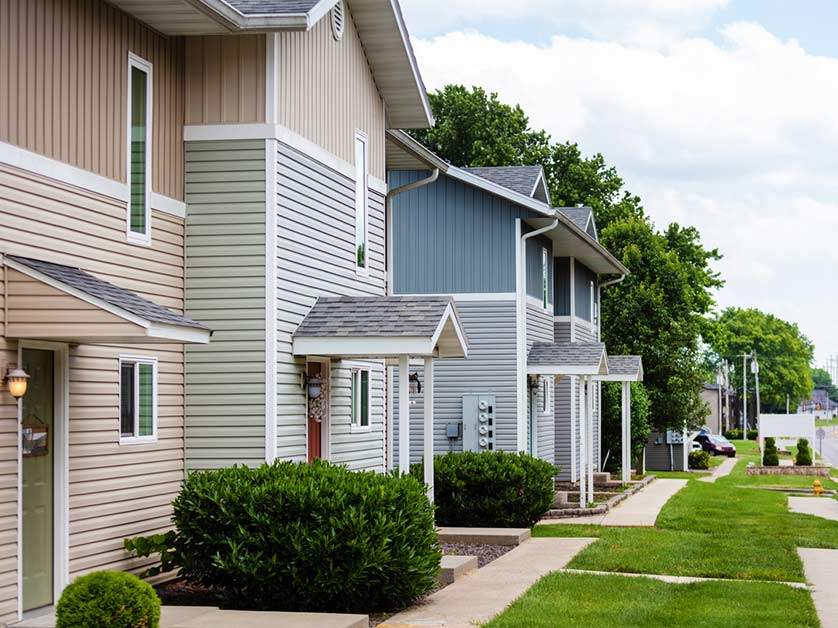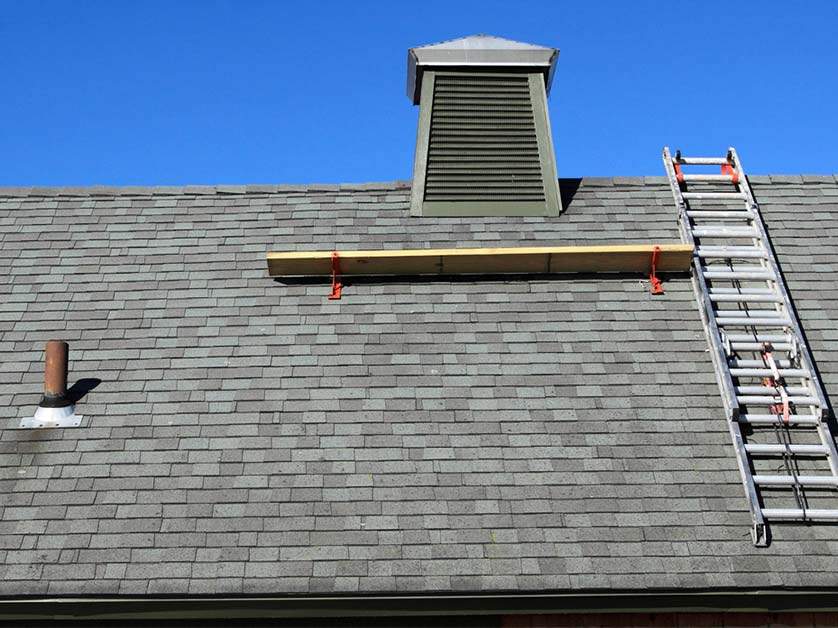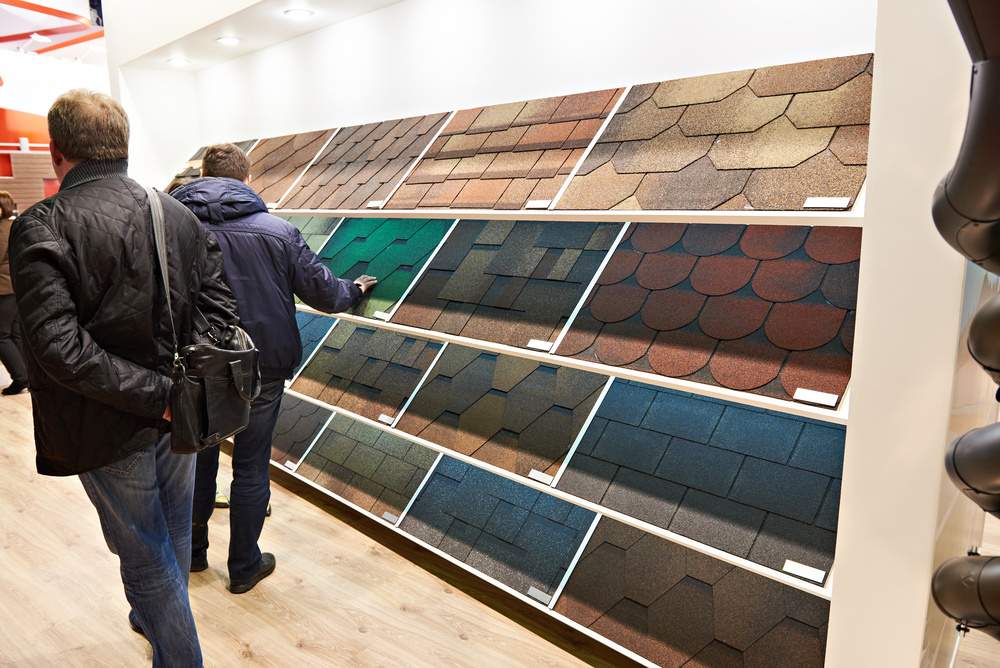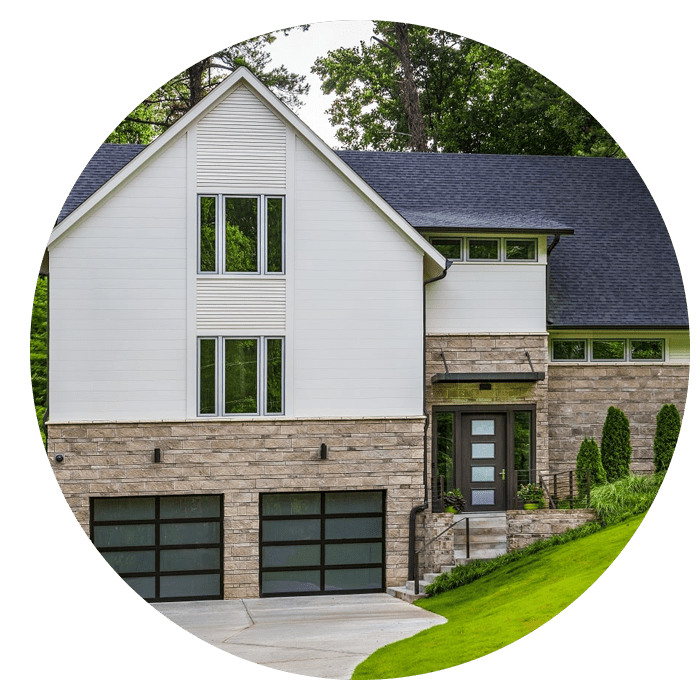In addition to the color of your siding, its design will also contribute greatly to the look and feel of your home. Choosing a particular design or style to go with your color choices will depend a lot on your personal preferences, but can also be influenced by your home’s architectural style.
Horizontal Lap Siding
Horizontal lap siding, also known as bevel or clapboard siding, is possibly the most common type of siding design around. Installed in multiple horizontal rows, it features rows that overlap with the one immediately beneath it. This style of siding is a common feature of houses in Colonial or traditional architectural styles, such as Cape Cod houses, and also works well with houses in a boxy or symmetrical design.
Board and Batten
Board and batten siding is typically referred to as barn siding because it’s the type most commonly installed on barns. In contrast to horizontal lap siding, it runs vertically,and is composed of wide boards with narrower strips, or battens, in between. There is no standard width to either board or batten but the siding design is ideal for more rural or traditional-looking homes. Playing around with non-standard widths for the boards and battens leaves a lot of room for innovation and personal expression.
Shakes and Shingles
The main difference between siding shakes and shingles is that shakes are hand-split while shingles are cut by a machine, which gives the latter a more uniform appearance. They will look similar to roofing shakes and shingles so they will produce the same effect in appearance. Use siding shakes and shingles alongside those for roofing and you can create a kind of seamlessness that is highly appealing. Siding shakes and shingles are best for Craftsman or Arts and Crafts architectural styles.
Fiber Cement Panels
Fiber cement siding can come in different forms but panels are popular because they create a flat, uniform surface with shadow lines where the panels meet. While more generally suited to modern houses, this siding design also works with Prairie-style homes, when combined with battens placed over the panel joints.
Have a color and design in mind for your siding? Great! Now it’s time to get started on choosing the specific siding product you will be choosing, beginning with getting to know siding brands. Head on over to Part III to learn more about James Hardie siding.




